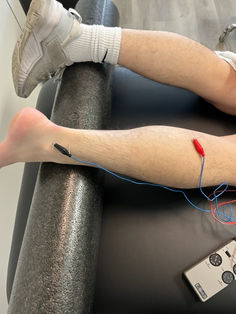Sciatica

The sciatic nerve is the largest and longest nerve in the human body. It originates in our lumbar spine between the levels L4-S3 and leaves the spine traveling down the leg while supplying innervation to muscles and sensation. Sciatica is a condition in which the sciatic nerve get pinched causing pain that can radiate from the low back down the entire leg into the foot. The sciatic nerve can get pinched anywhere along its path from the low back down to the foot. The most common locations are the lumbar spine and piriformis muscle (if the nerve is pinched in the piriformis it may be referred to as piriformis syndrome). In our spines we have discs that separate each level of our spine. They act as shock absorbers to prevent injury to the spine. This disc can bulge however over time as a result of daily life. This is insignificant unless the disc bulges enough to hit the nerve or the disc herniates. If the disc herniates the contents of the disc spill out of the disc and can press against the nerve (please see picture). When this happens it can send a severe and agonizing electrical pain with numbness/tingling down the leg. It is estimated that 70% of people with low back pain have leg pain. However true sciatica accounts for 7% of those cases. Meaning sciatica is not actually as prevalent as many people think it is. There are many different causes of low back with glute or leg pain and these include the lumbar spine facet joints, the sacroiliac joint, the hip joint, the cluneal nerves, or pain from a muscle/tendon in our hips called the gluteus minimus that can mimic sciatic like symptoms and cause pain referral down the leg. It is typically clear to identify those with sciatica from a subjective where the person may report searing pain when walking, pain when bending over, constant searing pear, or a recent trip to the emergency room. Provocative testing in physical therapy can also help easily identify sciatica to distinguish it from other conditions.
Sciatica is absolutely treatable in physical therapy though it is highly variable depending on the case. Sciatica tends to respond very well to dry needling with electrotherapy. This helps send blood flow to the nerve to help it heal. We use this in conjunction with specific exercises to help the nerve and muscles surrounding the nerve heal. In severe cases sciatica may not respond to physical therapy initially but we still have solutions. Some patients may have severe pain and need to be referred out for medication adjustments or injections to help alleviate the inflammation around the nerve. When this is done we can resume physical therapy to reduce muscle tone, improve nerve dynamics, and improve strength in the core and legs to make sure symptoms do not return. We always work to establish a plan of care based on the specific person's case. Please see the photos below for examples of how we treat sciatica in our clinic. If you would like to schedule an appointment please reach out to us.
1
1. Evidence in Motion. Management of Lumbopelvic Conditions.
.jpg)









